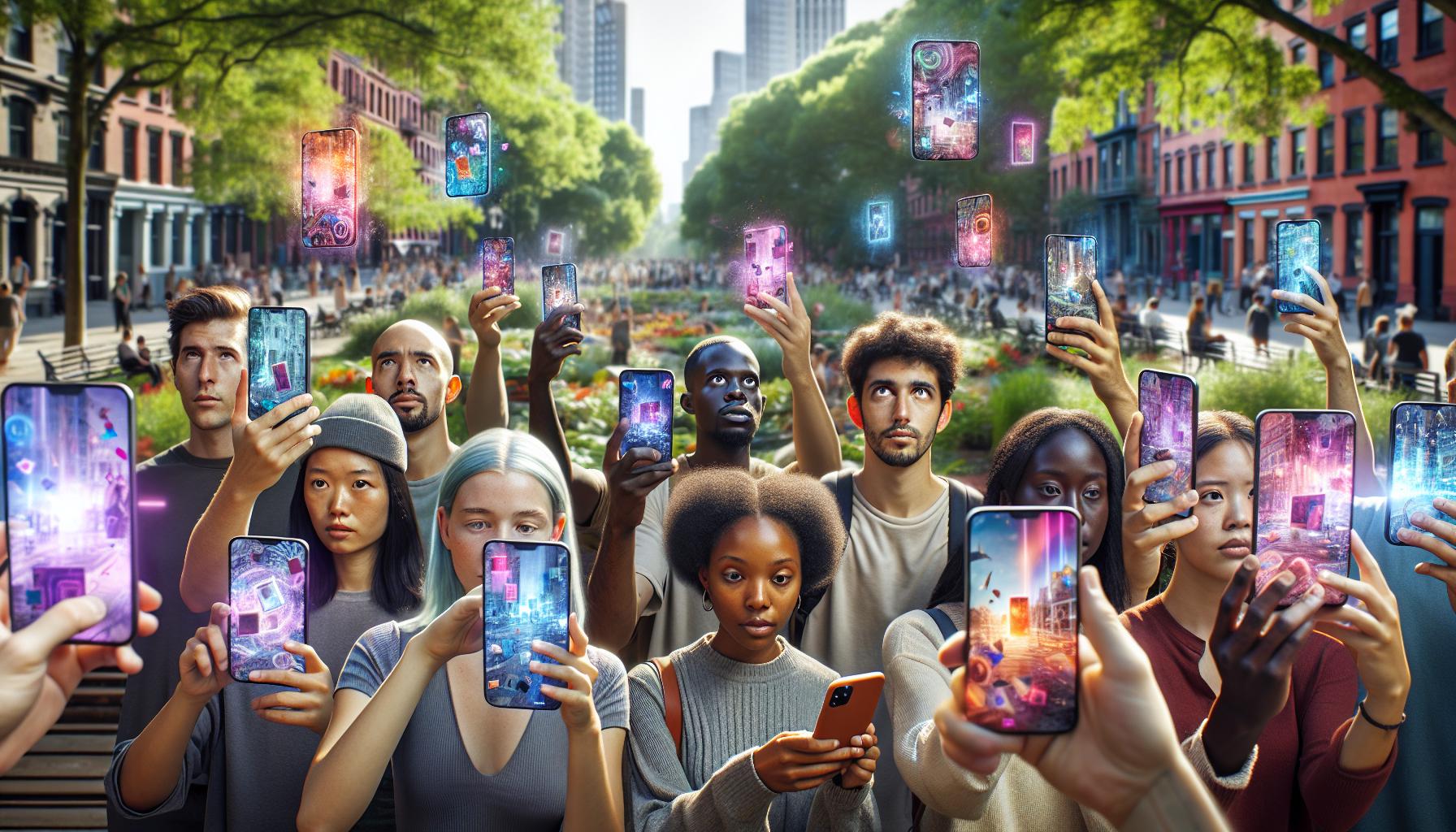In a world where technology often feels like magic, augmented reality cards are turning the ordinary into the extraordinary. Imagine flipping through a deck of cards that spring to life, showcasing 3D animations and interactive experiences right before your eyes. It’s like having a personal magician in your pocket—minus the top hat and rabbit, of course.
Augmented Reality Cards
Augmented reality cards integrate digital elements with physical card designs, enabling immersive interactions. Users engage with these cards through mobile devices, which recognize visual markers and trigger animations. Visual enhancements turn simple card games into dynamic experiences that captivate audiences.
Card applications often showcase numerous features, enhancing gameplay and education. For instance, users can view 3D models associated with cards or witness animated scenarios. These interactive experiences make learning and playing more enjoyable.
The technology relies on augmented reality software, which interprets the camera feed and overlays digital content. Consequently, developers create unique applications tailored to various interests, including gaming, education, and marketing. Numerous companies produce augmented reality cards, each with distinct styles and themes.
Accessibility remains a key benefit of these interactive cards. Users find it easy to download necessary apps on smartphones or tablets. This convenience facilitates widespread adoption among different age groups and demographics.
Market trends indicate a growing interest in augmented reality applications, supporting the expansion of augmented reality cards. Statistics show that the augmented reality market is projected to reach $198 billion by 2025. This substantial growth underscores the increasing significance of enhanced visual experiences across industries.
Augmented reality cards represent a blend of creativity and technology, transforming how individuals interact with traditional card games. By offering exciting digital experiences, these cards hold promise for future developments in entertainment and education.
How Augmented Reality Cards Work

Augmented reality cards utilize advanced technology to merge digital content with physical elements, creating an interactive experience for users. By using visual markers, these cards trigger animations and 3D elements through mobile devices, turning ordinary gameplay into captivating interactions.
Technology Behind Augmented Reality
Augmented reality cards rely on software that recognizes specific images or patterns. Mobile applications utilize cameras to identify these visual markers and subsequently overlay digital content on the screen. High-quality graphics enhance the experience, as powerful processors handle complex animations seamlessly. Additionally, various programming languages and AR development kits contribute to this technology’s advancement. Tools like Unity and Vuforia play significant roles, making the development process more efficient for creators aiming to engage users through innovative designs.
Applications Of Augmented Reality Cards
Various sectors benefit from augmented reality cards, especially gaming and education. In gaming, these cards enhance player engagement, offering immersive challenges and interactive narratives. Educational applications also flourish, allowing students to experience subjects like history or biology through animated lessons and interactive quizzes. Marketing use cases include promotional cards that attract customers with entertaining and informative experiences. The versatility of augmented reality cards positions them as essential tools for enhancing entertainment value while providing educational insights.
Benefits Of Using Augmented Reality Cards

Augmented reality cards provide numerous advantages that enhance user experience and learning outcomes. From engaging interactive elements to enriching educational content, these cards significantly transform traditional applications.
Enhanced User Engagement
User engagement increases as augmented reality cards create captivating experiences. These cards capture attention through 3D animations and dynamic visuals, turning standard gameplay into immersive adventures. Participants feel compelled to explore every element as they interact with the content. Statistics show that users report higher satisfaction rates when using augmented reality compared to conventional methods. Social sharing opportunities arise as users showcase their unique experiences online, expanding reach and promoting community interaction. In summary, augmented reality cards strengthen connections between users and their environments, making interactions more memorable.
Educational Advantages
Educational environments benefit greatly from augmented reality cards. They facilitate active learning by allowing students to visualize complex concepts through animations, enhancing understanding. Subjects such as history and science gain depth when animated lessons supplement traditional materials. Research indicates that students retain information better when actively engaged, making augmented reality cards a powerful tool for educators. Quizzes and interactive challenges encourage participation, keeping learners motivated and focused. Additionally, these cards promote collaboration among peers, fostering teamwork as they explore shared experiences. Overall, augmented reality cards revolutionize education by creating dynamic and interactive learning experiences.
Challenges And Limitations

The integration of augmented reality cards faces several challenges and limitations that can hinder their effectiveness.
Technical Limitations
Developers encounter several technical limitations related to augmented reality cards. Resource-intensive software can impose performance constraints on devices, leading to lag or crashes. High-quality graphics often require powerful processors, limiting accessibility for users with older models. App compatibility issues also arise across different operating systems, creating inconsistency in user experiences. Furthermore, internet connectivity can affect the functionality of these applications, making offline use difficult. Users may find these technical barriers frustrating, which detracts from the overall enjoyment.
User Accessibility
User accessibility remains a crucial challenge for augmented reality cards. Not every individual has access to the latest smartphones or tablets equipped with advanced AR capabilities. People with visual impairments may struggle to fully engage with visual elements, limiting interactions. Users unfamiliar with technology may find it difficult to download apps or understand how to operate them effectively. Additionally, the need for specific apps to access augmented reality cards can deter potential users who prefer straightforward experiences. This creates a gap between those familiar with technology and those who are not, impacting widespread adoption.
Future Trends In Augmented Reality Cards
Increased personalization stands out as a key trend in augmented reality cards. Users can expect tailored experiences based on individual preferences, enhancing engagement and enjoyment. Enhanced interactivity emerges as another vital development, enabling greater user involvement in gaming and educational applications.
Integration with artificial intelligence promises to revolutionize how augmented reality cards respond to user actions, making experiences more dynamic and responsive. Developers are exploring seamless cross-platform functionalities, ensuring users can access augmented reality cards effortlessly on various devices.
Expansions in 5G technology facilitate faster data processing, allowing for more complex animations and real-time interactions. As networks improve, users will experience an increase in the quality of augmented reality applications.
The gaming industry will likely see a surge in augmented reality cards that feature multiplayer capabilities, promoting social interaction during gameplay. Educational institutions may adopt a wider range of subjects utilizing augmented reality cards, making challenging topics more accessible through immersive learning experiences.
Sustainability also plays a critical role in future innovations, with brands seeking eco-friendly materials and production methods for physical cards. This approach aligns with growing consumer expectations for environmentally responsible practices.
Market statistics suggest rising consumer interest in augmented reality experiences. As of 2021, the global augmented reality market generated a revenue of approximately $30.7 billion, reinforcing the anticipated growth trajectory and its projected reach of $198 billion by 2025.
Collaborations between technology companies and educational organizations signal a commitment to creating innovative content merging digital and physical learning experiences. These partnerships aim to enhance the overall user experience and push the boundaries of augmented reality card capabilities.

